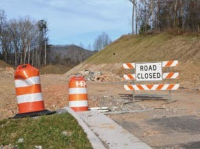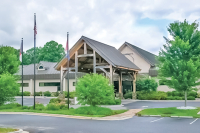Let’s work toward a better Maggie Valley
To the Editor:
Former President Ronald Reagan once said, “The republic is a dream. If we stop dreaming, we will lose the republic.” There is a Bible phrase, “Without dreams and visions, people will perish.” Our better future is a dream for ourselves, for our families and our community. This is about the hopes and dreams of a little girl, Maggie.
Maggie’s dream started in 1970 with a report, “Gateway to the Smokies.” Since then, there have been four publications. “Driving Miss Maggie,” “Maggie Valley Land Use Plan” and “Moving Maggie Forward.” Now, we have the Town Center Master Plan. Four publications in the last 13 years.
The obvious question is why this small town spends $20,000, $30,000 every few years for these reports. So I searched these reports on the Internet, printed them out, and put them in a binder and studied them. Each report is actually a chapter of the original book “Gateway to Smokies.” Each chapter describes a different aspect of Maggie’s dream. “Driving Miss Maggie” is a socio-economic study, describing housing, population, employment and educational challenges of Maggie. It also sets the background for the Land Use Plan, which is, or should be, the north star of our planning and zoning regulations. “Moving Maggie Forward” is a business plan. It talks about Maggie’s strengths, weaknesses, opportunities and threats. I suggest every business owner should have a copy of this business plan.
And now the Town Center Master Plan. This is a 93-page long comprehensive report, explaining different ingredients of how to create a live, walkable town center. Unfortunately, it seems to me that we could not pass the cover page for the last couple of months. I tend to blame the image on the cover. That rendering is the reason why we have not been able to move to the next page. The image is so strong, so powerful that it does not allow us to read the rest of the report. I suggest that we should get rid of that image, not the concept, not the location, just that image that divides us.
Now, we can read the rest of the report and dream our town center. And we should be able to describe our dream to others such that a blind person can say, “Yes, I can see it, I can feel it because you described it so well in every detail.” A well-described dream is more powerful than an image because it allows us to share it with others. It allows others to engage in our dreams. A dream can unite people, move people towards a common goal. At that point, a dream becomes a promise. If the promise is clear, people can find a way to make it happen.
Here is an example. Most of us have kids. And, we always tell our kids to go to school, stay in school; go to college; go to a grad school. Why? We, all know that college is expensive, $50,000 or $60,000 on average. A single mom takes a second job so that her kid can go to college. A dad works overtime so he can set aside money for the college fund. Why do we do all these sacrifices without knowing if our child will ever finish college and get her degree? Why do we encourage our kids to go to college without knowing whether they will stay in college or not; whether they will keep changing majors every few years?
We do it because the promise is clear. Because the promise is a better future for our children. When a child says, “Dad, when I grow up, I want to be a doctor,” do we give our child a list of reasons why she cannot be a doctor? No! We encourage her as much as possible. We find a way to make it happen for the future of our child. But when it comes to this little girl, Maggie, well, we got the list. Let’s put the list away and work towards a better future for Maggie.
Kivanc Senocak
Maggie Valley





